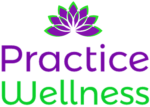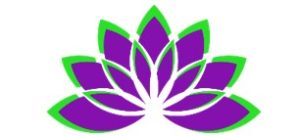Today, I would like to explore the Niyamas in some detail – the second limb of the Eight Limbs of Yoga. I decided to handpick specific parts within this limb as I can speak from experience and hope that you can benefit from my personal recommendations.
See the highlighted parts in the chart below.

In a previous blog , I briefly introduced the Yoga Sutras and the Eight Limbs of Yoga (Ashtanga: Ashta = eight, Anga = limbs) and how, in my personal opinion, it is essential to be aware of the big picture, if you are serious about your yoga practice. The sutras, pulled together by Patanjali, an Indian sage in the early centuries, are relevant and applicable today as they were back then.
The first two limbs that Patanjali named Yamas and Niyamas map out the behaviours of yoga practitioners. Yamas are about the way we relate to the world (outward), and Niyamas, how we deal with ourselves (inward), or to quote my own teacher, “how you behave when no one is looking”!
Niyamas consist of five important practices as detailed below in Sanskrit, the original language of yoga:
Saucha (cleansing)
Santosha (contentment)
Tapas (self discipline)
Swadhyaya (self study)
Ishvara Pranidhana (connection with the divine)
Clearly, there is a lot of ground to cover here, so let’s only focus on the first one today, Saucha (cleansing). Saucha is a holistic approach to physical and mental cleanliness. It is about tidiness where you do your yoga; and where you live and work, in general. It is also about keeping your body healthy through food, exercise and detoxing techniques; and the mind pure through mindfulness meditation. Saucha may be an inward observation but it has a great influence on many other areas of our lives.

This brings me to shatkarmas, one of the ways to keep the body clean. Shat means six and karma means action in Sanskrit. The six actions are:
Neti (cleansing of the nasal passages)
Dhouti (cleansing of the alimentary canal)
Tratak (gazing steadily)
Nauli (strengthening of the abdominal organs)
Basti (cleansing of the large intestine)
Kapalbhati (cleansing of the frontal area of the brain)
Next, let’s delve into the first three, Neti, Dhouti and Tratak and my personal experience with them.
Neti: for anyone suffering from dust and pollen allergies, I would highly recommend getting a neti pot to cleanse the nasal passages, using a natural and effective method. I have personally benefited from this practice and no longer require antihistamines for hayfever which I suffered from for years. You will need warm water (boiled and cooled down) with sea salt and a neti pot. (Search for neti pot on the internet, as I would rather not to recommend a specific brand, but do message me directly if you want to know which one I’m using.) Learn how to use a neti pot on WikiHow.
Dhauti: is the cleansing of the digestive tract with warm water (boiled and cooled down) and sea salt. This method, called Shankprakshalanak (yes, quite a mouthful), takes just one morning to complete but it is important NOT to eat solid foods the night before and to follow a simple diet after the cleansing. In addition to drinking a few glasses of salt water, you should also to do simple yoga exercises that help the cleansing process. Regular Shakprakshalanak has completely transformed my digestive system which of course reflects on my overall wellbeing. There are contraindications for this practice, so please read the instructions carefully and expect to feel tired after you have completed the process. Here is how to practice this Dhauti.
Tratak: means to gaze steadily, traditionally intended to help purify the body in preparation for a path towards higher meditation. Tratak stimulates the brow chakra and pineal gland, balances the nervous system, relieves symptoms of insomnia, helps with mental health issues and improves memory. There are two forms of Trataka, Bahiranga (external) and Antaranga (internal). In Bahiranga, you gaze at an object, such as the flame of a candle. In Antaraga, you visualise the flame in your mind’s eye and gaze inwardly. I practice and teach Tratak at my mindfulness classes in Bath but this is something you can easily do at home. Here is how you can practice Tratak.
At my forthcoming Immersion group yoga classes in Bath, we will go through the Yamas and Niyamas as well as the rest of the limbs week by week! Learn more about our Immersion classes here.
Thank you for reading! Feel free to comment below or email me if you have any questions.
Side note: if you made it this far through the blog, I thought I’d ask if you don’t mind leaving a review on Google for me, if you’ve ever practiced yoga or meditation with me. After lots of trials, I was finally added to Google a few days ago and currently have no reviews. As I’m sure you know Google reviews are crucial for business growth so I’d be very grateful for your 5 stars 😉 when you can. Here is the link – and thank you in advance!
Namaste
Sossi x



